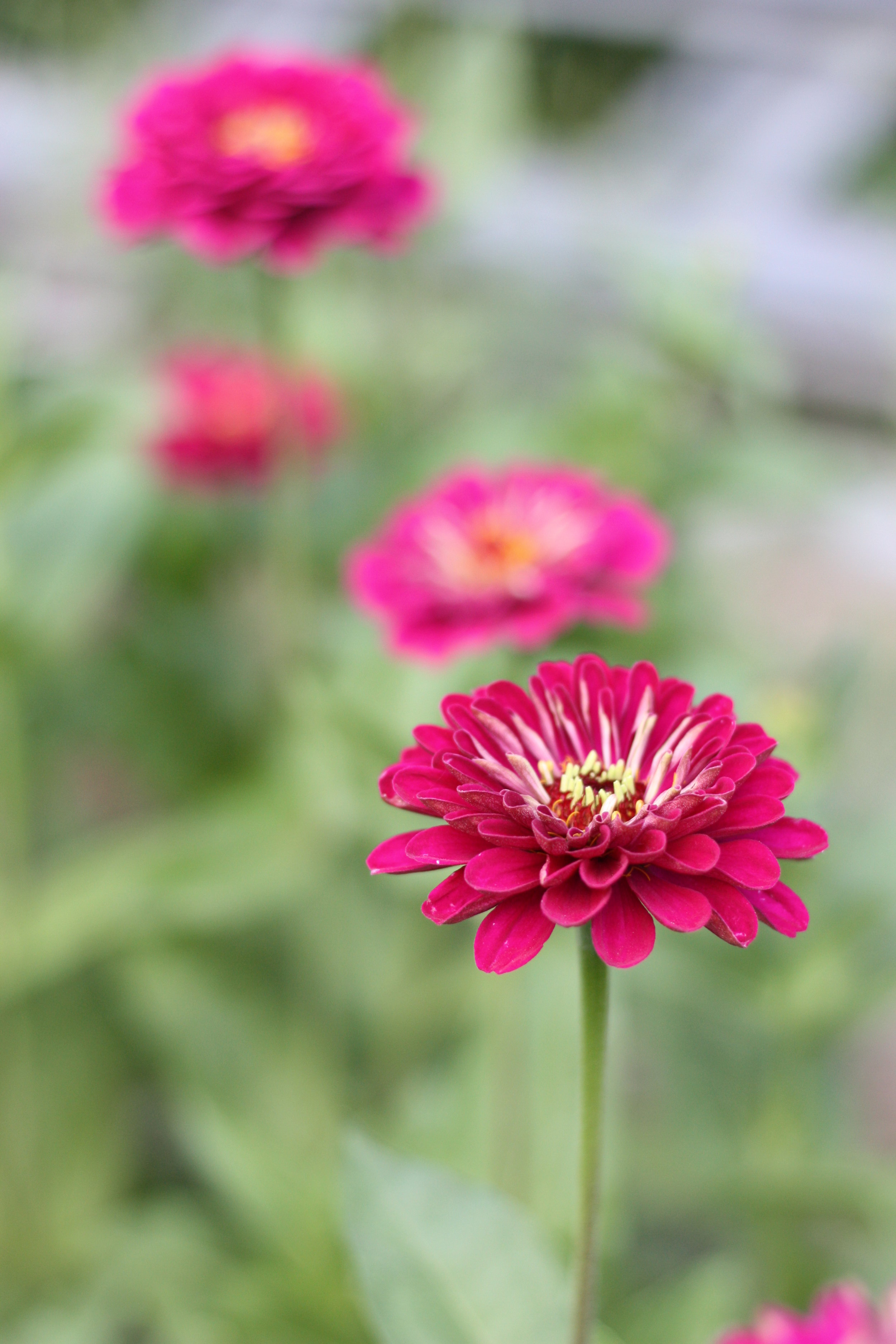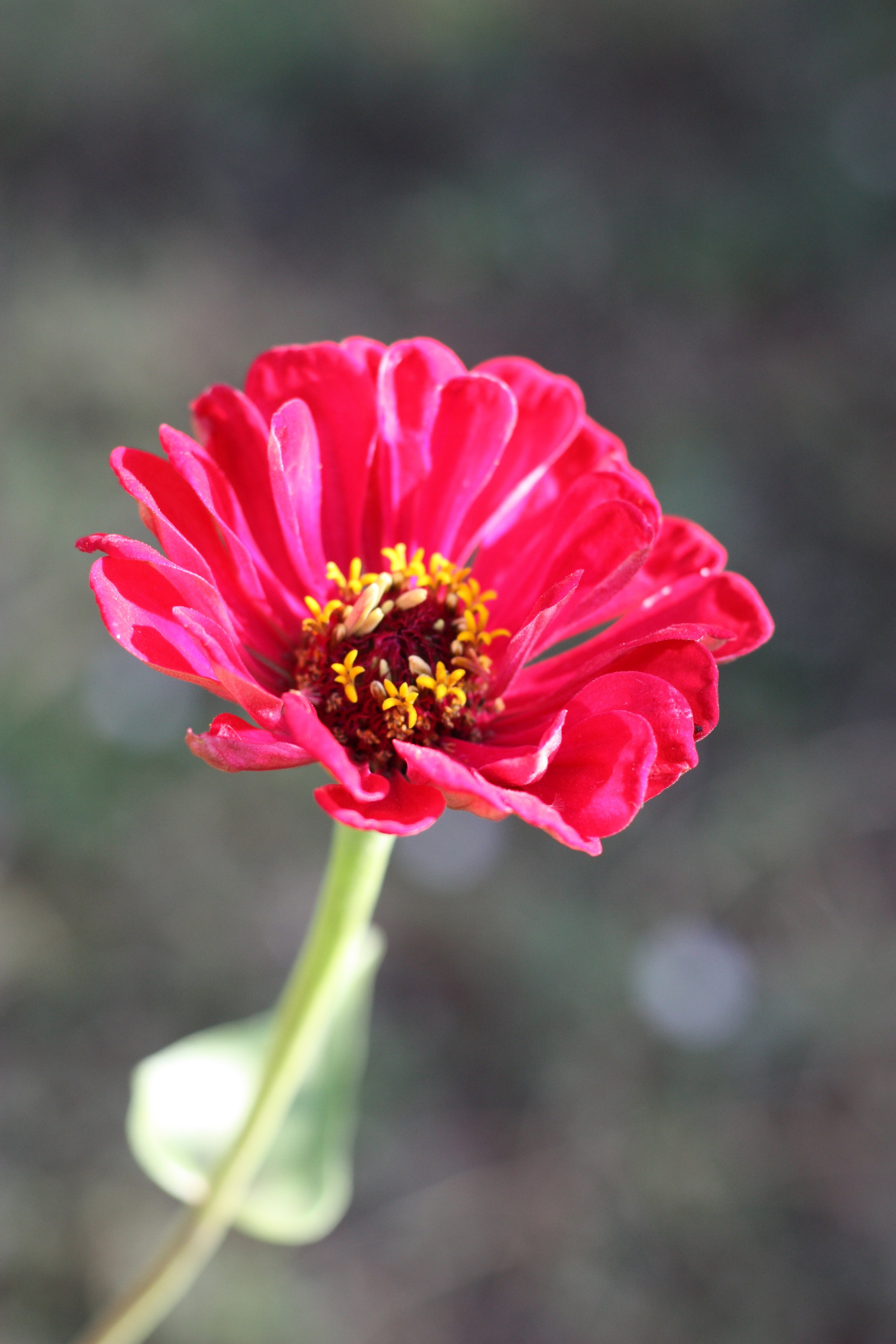Benary Giant Zinnias: Are They Worth It?
Benary Giant zinnias are the gold standard when it comes to zinnias. Great in form, comes in a variety of colors, and absolutely massive when it comes to their size - a good four feet tall (if not taller) with large 3-4” flowers that are absolutely stunning.
Also known as the Blue Point zinnia (which were specifically bred and marketed as a florist zinnia), the Benary Giants are some of the most commonly grown zinnias for flower farmers.
However, it’s not all great necessarily. My main issue with the Benary Giants is that they’re not consistently double for some of the colors - the Salmon color being the most inconsistent (which of course the salmon colored varieties would be!) and the seed can also be expensive (100 for $6)
I heard that the Giant Dahlia Flowered zinnias were a more economical option (850 for $4!) so I decided to give them a try along with the Benary Giants.
NOTE : Both of these zinnias were considered for this comparison because both produce what are known as “double” flower forms - where you don’t have just one single row of petals, but at least two rows of petals that overlap on top of each other, and preferably more. The multilayered effect creates more of a spherical or “beehive” shape that gives more dimension and more interest to the flower.
Now, one of the things I like about the Benary Giants is that they do come in straight colors, which is partially the reason why they are more expensive (since it takes much more effort to isolate and crossbreed the single colors) compared to the mix.
The Giant Dahlia Flowered zinnias on the other hand only came in a mix - which, for the price, wasn’t bad, and I was sure if I planted enough I would have more than of each color to cut from. More zinnias in this case seems like it would be a good thing.
I planted large swathes of both the Giant Dahlia Flowered mix as well as three of the Benary Giant series: Salmon, Giant Wine and Giant Deep Red. I figured that since I already knew previously that the Salmon were a variety that was more prone to throwing single flower shapes that I could give the other two a test to see if they fared better.
All these were planted in the same place, given the same amount of sunlight, moisture, nutrients and care, and they all did very well- but just how well did each of them do?
Benary Giants
As I mentioned, we have grown the Benary Giant Salmon zinnias before for florist sales and wedding design given their lovely hue and soft color. And as expected given our experience with them, the Benary Giant Salmon zinnias were their usual selves - about 50% singles and 50% doubles for us. Not bad, but also not great since the singles aren’t really that usable for us in design (although very pretty in the garden).
Honestly, I think we’ll always grow the salmon color since it is a great color for design - especially for selling to florists and doing wedding design - but I’m not always happy with how many singles there are.
The Benary Giant Wine is a deep fuchsia or royal purple coloration (depending on the light and the time of the year), while the Benary Giant Deep Red is a dark raspberry color. Both are an absolute stunner for market bouquets especially when paired with other saturated and deep colors.
Not so great for selling to florists or using in wedding design - unless our client would have specifically requested bright jewel tones we would have probably not have used these in any wedding designs - but they are absolutely stunning in terms of color.
What I liked about these two were the higher percentage of double flowers. The flower heads were much more uniform, with the percentage of doubles being much higher than the Benary Salmon, which helps a lot as far as uniformity.
But the real question was how did the Giant Dahlia Flowered variety do?
Giant Dahlia Flowered Zinnias
The Giant Dahlia Flowered zinnias started off well, direct sowing easily and growing with the same vigor and speed as the Benary Giants. They started throwing up long and strong stems at the end of June and continue to bloom until frost.
I was excited to see the the flowers, but was unfortunately pretty disappointed with them. Although there were some stunners in the bunch, the amount of variability was very high - with a lot of weirdly shaped flowers and a high percentage of singles.
Don’t get me wrong - I love the wild and weird and I love using single zinnias in arrangements and enjoying them in the garden, but if you’re looking to achieve big poofy double zinnias this might not be a good idea.
There’s a couple good doubles in colors that aren’t available from the Benary Giant series such as this lovely light creamy lavender one.
There are also some lovely colors among the mix such as this light brown-cream one that I would buy all the seed for if it were available (#sorrynotsorry)
On the other hand, there are also a lot of hideous singles like this one.
Or whatever is going on with this one.
While they’re not bad in the garden for a splash of color, if you’re looking to sell marketable stems of zinnias I would highly encourage you to steer away from the Giant Dahlia Flowered varieties. There’s just too much variability as far as color and form for it to really perform well as a flower farming variety.
So are the Benary Giants worth it?
I suppose it depends on why you’re growing zinnias.
The answer for a flower farmer would most likely be “yes”. Despite the fact that not 100% of your flowers will be large well-formed doubles, there is still a high enough percentage of double formed flowers to make it worth the investment (with higher percentages obtained in other colors such as the Deep Red and Wine varieties compared to the Benary Giant Salmon).
I think that double zinnias are imperative for the flower farmer to set their flowers apart from the garden variety zinnia (literally). A bouquet of Benary Giant zinnias is going to go over much better than a bouquet of single zinnias - it just feels richer and more valuable, and if you’re going to be growing zinnias for cut flowers then why not plant a zinnia variety that is going to give you a showier flower?
On the other hand, if you’re just growing zinnias to enjoy them in your garden or even grow them for a U-cut operation, then the Giant Dahlia Flowered mix might be worth it. It’s much more economical imparted to the Benary Giants, which would allow you to be sow them with abandon and give you plenty of multicolored blooms of different shapes and forms to enjoy.
I think we’ll be going back to growing the Benary Giants solely next year, but what do you think?
More on growing zinnias
If you liked this post on growing Queen series zinnias, you may like these other posts on zinnias too:








